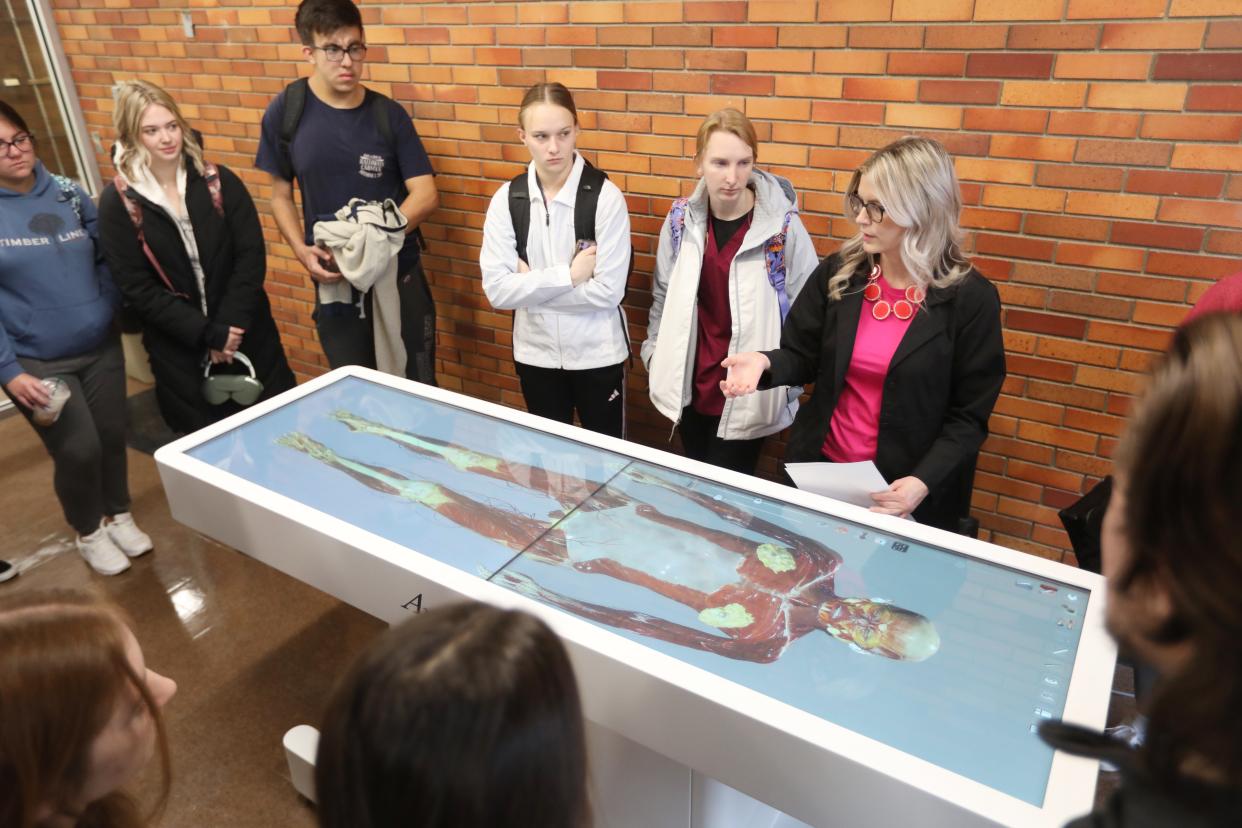New technology gives MU students deeper look into the human body

NEW CONCORD − The human body is a host of complex systems, and portraying the way they interact with each other in the body cavity can be a challenge with plastic models and pictures in a book. Muskingum University's new Anatomage Table, a virtual cadaver, has helped the university portray those complex systems without the need for formaldehyde.
"This is a virtual cadaver," said Associate Professor of Nursing Kathleen Jefferis, as she stood over the table. "It allows us to open up the human body and look at it in thousands of different ways."
The Anatomage Table's two large screens show a life-size cadaver. On a recent morning, Jefferis demonstrated the table to a group of nursing fundamentals students. With a few taps of a virtual button, the cadaver's skin disappears, exposing her muscular system.
"We can look at the different body systems, take away body systems and focus on one in particular," Jefferis said. The cadaver helps show students the why behind different medical practices, like why a medical professional listens to different areas of the chest when listening to a patient's lungs.
"When we listen to the chest, we listen to different locations, this gives them the knowledge why they have to listen to the second rib, I can see anatomically why I am listening to different areas," Jeffries said.
Jefferies pulls up a scene of a beating heart. It pulses with virtual life, and she strips away a layer to show the valves opening and closing. "For the health assessment class, you can pull up a beating heart, you can see an electrocardiogram, what you would see on a cardiac monitor, and you watch the heart beating along with that cardiac monitor."
Professors can strip away layers of the virtual cadaver 1mm at a time, and rotate the body in any direction. A slash of a finger will cut the virtual body and show a virtual cross section at any angle.
"This machine has allowed us to incorporate all aspects of the human body into critical thinking and critical judgement and delivery of wholistic care," said Terra Armstead, associate professor of Nursing and Nursing Lab manager. "As a nurse, we are not just looking at the meds they might get, we need to understand the meds and what they will do to the body." The machine helps show students the effects of surgery, and what normal healing looks likes.
The realistic depiction of the body allows professors to show where common devices go in the body. "It has helped us understand how to teach differently," Armstead staid.
The virtual cadaver isn't just used by nursing students, but across a wide spectrum of classes offered at the university. Exercise science professors use it to show students how the muscular system works, and Chair of the Department of Sociology Sandra Schroer uses it to show students the reproductive system for her human sexuality classes. "It helps students understand what is going on in their body," she said.
Jefferies said demand for the table continues to increase as professors discover new ways to use it. It helps put the university on an equal footing with institutions with large research facilities that have access to actual cadavers, Armstead said. The virtual cadaver continues to receive updates. Recently, the company added a pregnancy module, which shows a CGI baby in the female cadaver's uterus.
The table was purchased through a gift from Muskingum Trustee Doctor Craig W. Anderson and his wife Deborah Hart Anderson. The couple, who both graduated from what was then known as Muskingum College, graduated in the early 1970s, and reside in Columbus.
ccrook@gannett.com
740-868-3708
@crookphoto
This article originally appeared on Zanesville Times Recorder: New technology gives MU students deeper look into the human body

